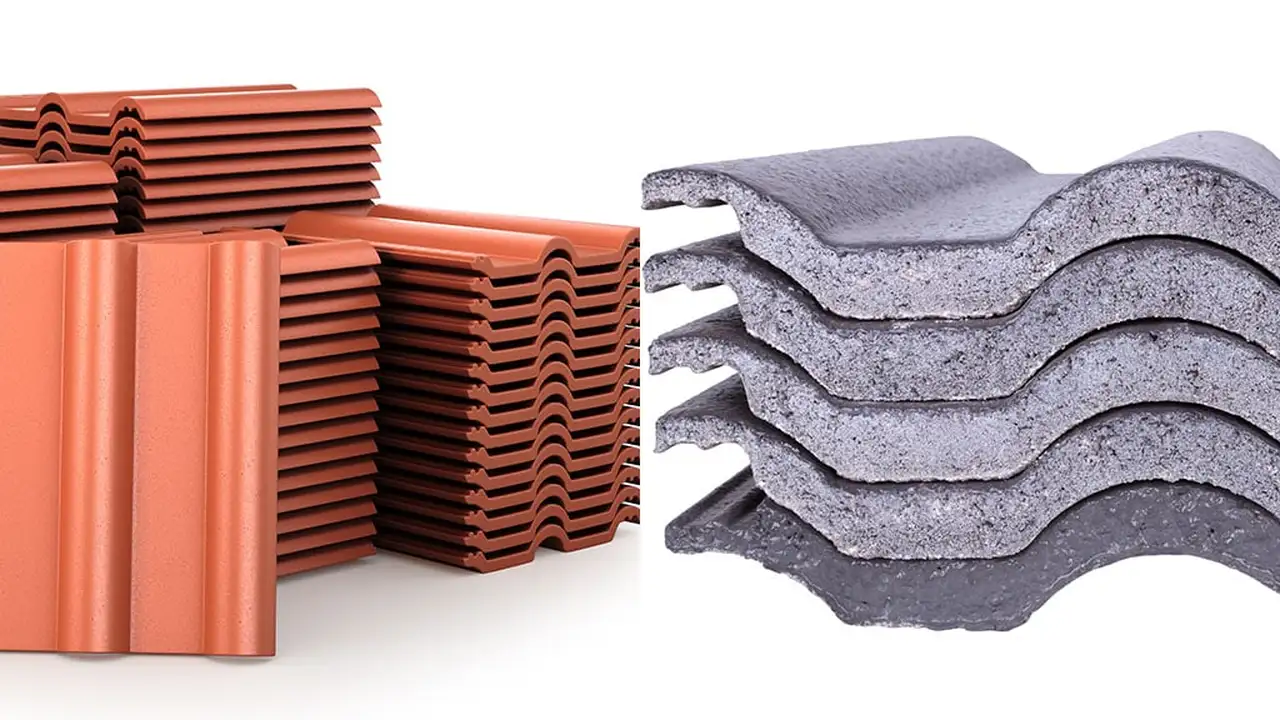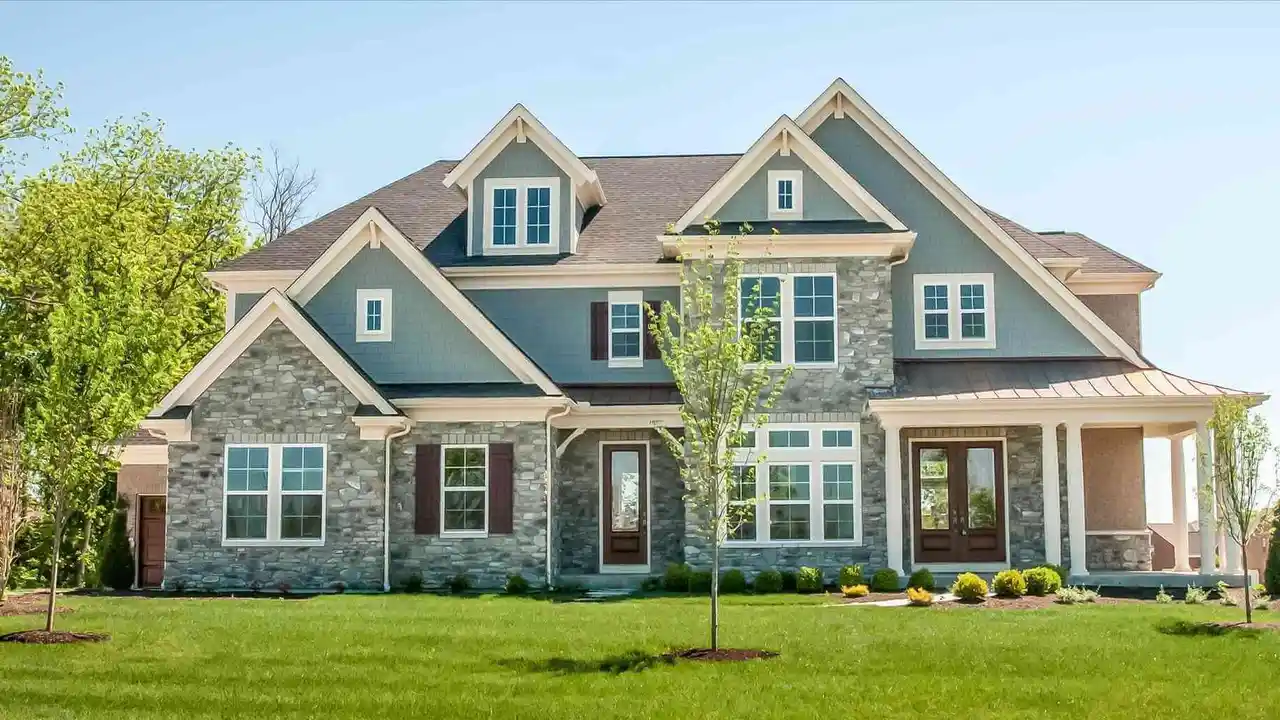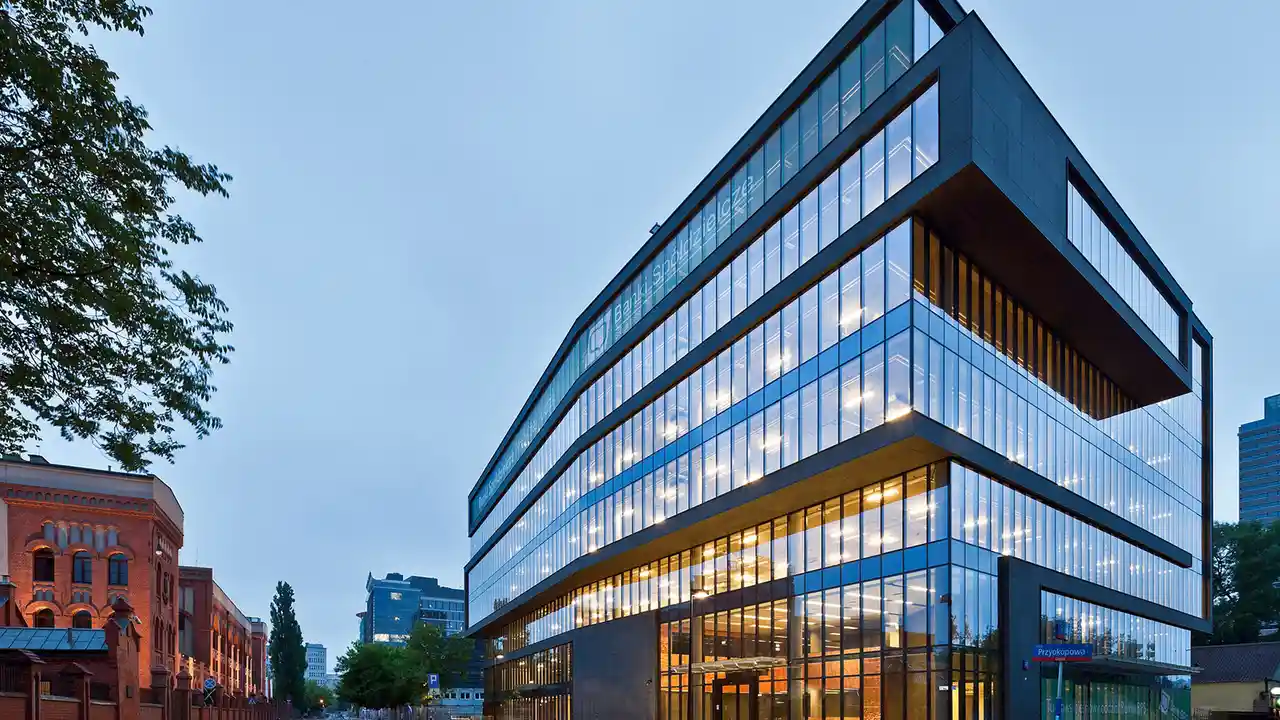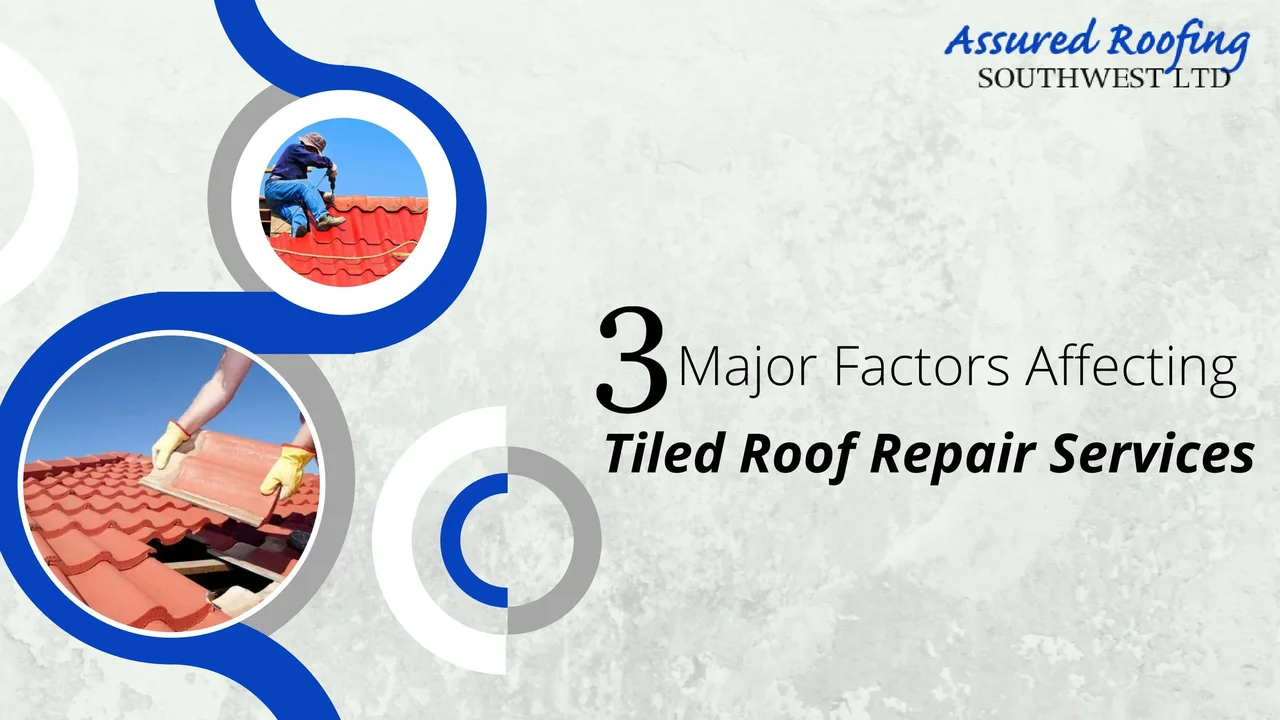Clay Tiles vs Concrete Tiles Which is Better
Compare clay and concrete roof tiles for longevity, aesthetics, and cost-effectiveness in tropical and temperate climates.

Discover which roofing material reigns supreme for your home: clay tiles or concrete tiles. We'll dive deep into their longevity, aesthetic appeal, and cost-effectiveness, considering both tropical and temperate climates. This comprehensive guide will help you make an informed decision for your next roofing project, whether you're in the sunny climes of Southeast Asia or the varied weather of the US.
Clay Tiles vs Concrete Tiles Which is Better
Choosing the right roofing material is a big deal. It’s not just about how your house looks; it’s about protecting your investment, ensuring comfort, and even impacting your energy bills. When it comes to tile roofing, two popular contenders often come up: clay tiles and concrete tiles. Both offer a distinct aesthetic and impressive durability, but they also have their own set of pros and cons. Let’s break down everything you need to know to decide which is better for your home.
Understanding Clay Roof Tiles History and Characteristics
Clay tiles have been around for centuries, gracing the roofs of ancient civilizations and modern architectural marvels alike. Their timeless appeal and natural beauty are undeniable. Made from natural clay, these tiles are fired in kilns at high temperatures, which gives them their characteristic hardness and durability. The color of clay tiles often comes from the type of clay used and the firing process, ranging from earthy reds and oranges to more muted browns and grays.
Key Features of Clay Roof Tiles
- Natural Aesthetic Appeal: Clay tiles offer a classic, Mediterranean, or Spanish-style look that many homeowners adore. Their natural variations in color and texture add character to any home.
- Exceptional Longevity: When properly installed and maintained, clay roofs can last for 100 years or even longer. This makes them one of the most durable roofing materials available.
- Fire Resistance: Clay is naturally non-combustible, offering excellent fire protection for your home.
- Pest Resistance: Unlike some other roofing materials, clay tiles are impervious to insects and rot.
- Eco-Friendly Option: Made from natural earth materials, clay tiles are often considered a more sustainable choice, especially if sourced locally.
- Good Thermal Mass: Clay tiles can help regulate indoor temperatures, keeping homes cooler in hot climates by absorbing heat during the day and releasing it slowly at night.
Potential Downsides of Clay Roof Tiles
- Higher Upfront Cost: Clay tiles are generally more expensive to purchase and install than concrete tiles.
- Weight: They are quite heavy, which means your roof structure might need additional reinforcement, adding to the overall cost.
- Fragility: While durable against weather, clay tiles can be brittle and prone to breaking if walked on improperly or hit by heavy falling objects.
- Installation Complexity: Installing clay tiles requires specialized skills and experience, which can increase labor costs.
- Limited Color Options: While beautiful, the color palette for natural clay tiles is somewhat limited compared to concrete.
Exploring Concrete Roof Tiles Modern Durability and Versatility
Concrete roof tiles are a more modern invention, gaining popularity in the 20th century as a cost-effective and versatile alternative to clay. They are made from a mixture of sand, cement, and water, which is then molded under high pressure and heat. Pigments are added to the mix to create a wide array of colors and finishes, often mimicking the look of clay, wood shakes, or even natural slate.
Key Features of Concrete Roof Tiles
- Cost-Effectiveness: Concrete tiles are typically more affordable than clay tiles, both in terms of material cost and often installation.
- Excellent Durability: Concrete roofs are incredibly strong and can withstand harsh weather conditions, including high winds, hail, and heavy rain. They usually come with warranties ranging from 30 to 50 years, but can last much longer.
- Wide Range of Styles and Colors: One of the biggest advantages of concrete tiles is their versatility. They can be manufactured to replicate almost any roofing material, offering a vast selection of colors, profiles, and textures.
- Fire Resistance: Like clay, concrete is non-combustible and provides excellent fire protection.
- Energy Efficiency: Many concrete tiles are designed with reflective coatings or lighter colors that can help reduce heat absorption, contributing to lower cooling costs.
- Recyclability: Concrete is a recyclable material, making it an environmentally conscious choice at the end of its life cycle.
Potential Downsides of Concrete Roof Tiles
- Weight: Similar to clay, concrete tiles are heavy and may require additional structural support for your roof.
- Color Fading: Over time, the pigments in concrete tiles can fade due to prolonged exposure to UV rays, especially in intense sunny climates.
- Moss and Algae Growth: In damp or humid environments, concrete tiles can be more susceptible to moss and algae growth, requiring periodic cleaning.
- Maintenance: While durable, concrete tiles may require more frequent cleaning than clay to maintain their appearance, especially in humid regions.
Performance in Different Climates Tropical vs Temperate Roofing
The climate where you live plays a significant role in determining the best roofing material for your home. Both clay and concrete tiles perform well in various conditions, but some nuances are worth considering.
Tropical Climates High Humidity and Intense Sun
For regions like Southeast Asia, characterized by high humidity, heavy rainfall, and intense sun, both tile types offer good solutions.
- Clay Tiles in Tropical Climates: Their natural resistance to mold and mildew is a huge plus. The inherent thermal mass helps keep interiors cool, which is vital in hot, humid environments. Their longevity means less frequent replacement, which is beneficial given the potential for severe weather.
- Concrete Tiles in Tropical Climates: Their strength against heavy rains and winds is a major advantage. However, color fading can be more pronounced under intense tropical sun, and they might require more frequent cleaning to prevent moss and algae buildup in consistently damp conditions. Opting for lighter colors or reflective coatings can significantly improve their thermal performance.
Temperate Climates Varied Weather Conditions
In temperate zones, where you might experience hot summers, cold winters, and everything in between, both materials also shine.
- Clay Tiles in Temperate Climates: Their excellent insulation properties help keep homes warm in winter and cool in summer. Their natural beauty complements many architectural styles found in temperate regions. They are also highly resistant to freeze-thaw cycles if properly manufactured and installed.
- Concrete Tiles in Temperate Climates: Their durability against snow, ice, and strong winds makes them a reliable choice. The wide range of styles allows them to blend seamlessly with diverse architectural designs. Modern concrete tiles are engineered to resist freeze-thaw damage effectively.
Cost Comparison Upfront Investment and Long Term Value
When budgeting for a new roof, it’s crucial to look beyond the initial purchase price and consider the long-term value.
Initial Costs Material and Installation
Generally, clay tiles have a higher upfront cost. This is due to the manufacturing process, the natural materials, and the specialized labor required for installation. Concrete tiles, being mass-produced and more uniform, tend to be more affordable per square foot. Installation costs for both can be high due to their weight and the need for skilled labor, but clay often edges out concrete in terms of labor intensity.
Long Term Value and ROI
While clay tiles have a higher initial cost, their exceptional lifespan (often exceeding 100 years) means they might be a once-in-a-lifetime investment. This translates to significant savings over time by avoiding multiple roof replacements. Concrete tiles, with a lifespan of 30-75 years, also offer excellent long-term value compared to asphalt shingles, which typically last 15-30 years. The return on investment (ROI) for both materials is generally high, as they significantly boost curb appeal and home value.
Aesthetic Appeal Style and Curb Appeal
This is where personal preference often comes into play. Both materials can dramatically enhance your home’s curb appeal, but they offer different vibes.
The Timeless Charm of Clay
Clay tiles are synonymous with classic, Old World charm. Their natural, earthy tones and undulating profiles evoke images of Mediterranean villas, Spanish haciendas, and traditional European architecture. If you’re aiming for an authentic, rustic, or historically accurate look, clay tiles are often the preferred choice. The way they age, developing a subtle patina over decades, adds to their unique character.
The Versatility of Concrete
Concrete tiles, on the other hand, offer unparalleled versatility. They can be molded and colored to mimic almost any roofing material, from the rustic look of clay to the sleek appearance of slate or the textured appeal of wood shakes. This means you can achieve a specific aesthetic without the higher cost or weight of the natural material. If you want a modern look, a specific color match, or a material that can adapt to various architectural styles, concrete tiles provide more options.
Maintenance Requirements Keeping Your Roof in Top Shape
No roof is truly maintenance-free, but the level of care required can vary between clay and concrete tiles.
Maintaining Clay Tile Roofs
Clay tiles are relatively low maintenance. Their smooth, non-porous surface makes them resistant to moss and algae growth. Occasional cleaning to remove debris like leaves and branches is usually sufficient. However, due to their brittle nature, walking on clay roofs should be done with extreme care, preferably by a professional roofer who knows how to distribute weight properly to avoid breakage.
Maintaining Concrete Tile Roofs
Concrete tiles, especially in humid environments, can be more prone to moss, algae, and lichen growth due to their slightly more porous surface. Regular cleaning, often with a gentle pressure washer or specialized roof cleaning solutions, might be necessary to maintain their appearance. While durable, they can also be susceptible to chipping or cracking if heavy objects fall on them. Regular inspections are recommended to catch any issues early.
Specific Product Recommendations and Pricing Examples
Let's look at some specific brands and estimated pricing to give you a clearer picture. Keep in mind that prices can vary significantly based on location, supplier, tile profile, color, and installation complexity.
Clay Tile Brands and Pricing
1. Ludowici Roof Tile (US Market)
- Description: Ludowici is renowned for its premium, handcrafted clay tiles, offering a vast array of profiles, colors, and finishes. They are known for their exceptional longevity and architectural beauty.
- Typical Use: High-end residential, historic restorations, commercial buildings where aesthetics and durability are paramount.
- Estimated Material Cost: $8 - $20+ per square foot (materials only).
- Estimated Installed Cost: $15 - $40+ per square foot (including labor and accessories).
- Pros: Unmatched quality, extreme longevity, stunning aesthetics, excellent warranty.
- Cons: Very high cost, heavy, requires specialized installation.
2. Boral Roofing (US Market)
- Description: Boral offers a wide range of clay tile products, including traditional Spanish and Mediterranean styles, as well as more contemporary profiles. They focus on durability and aesthetic appeal.
- Typical Use: Mid-to-high end residential, commercial.
- Estimated Material Cost: $5 - $12 per square foot (materials only).
- Estimated Installed Cost: $10 - $25 per square foot.
- Pros: Good balance of quality and cost, wide selection, strong reputation.
- Cons: Still a significant investment compared to other materials.
3. Local Clay Tile Manufacturers (Southeast Asia Market)
- Description: Many countries in Southeast Asia have local manufacturers producing traditional clay tiles, often in classic S-tile or flat shingle profiles. These can be more affordable and culturally appropriate.
- Typical Use: Residential, traditional buildings, resorts.
- Estimated Material Cost: $2 - $7 per square foot (materials only, highly variable by country).
- Estimated Installed Cost: $5 - $15 per square foot.
- Pros: Authentic local aesthetic, often more affordable, supports local industry.
- Cons: Quality can vary, less standardized warranties, potentially fewer color options.
Concrete Tile Brands and Pricing
1. Eagle Roofing Products (US Market)
- Description: Eagle is a leading manufacturer of concrete roof tiles, offering a vast selection of profiles (flat, low profile, high profile) and colors, many designed to mimic clay or slate.
- Typical Use: Residential, commercial, new construction, re-roofing.
- Estimated Material Cost: $3 - $8 per square foot (materials only).
- Estimated Installed Cost: $7 - $18 per square foot.
- Pros: Wide variety of styles and colors, excellent durability, good value, often comes with a limited lifetime warranty.
- Cons: Can be heavy, color fading can occur over time.
2. Boral Roofing (US Market)
- Description: In addition to clay, Boral also produces a comprehensive line of concrete roof tiles, known for their strength and aesthetic versatility.
- Typical Use: Residential, commercial.
- Estimated Material Cost: $3 - $7 per square foot (materials only).
- Estimated Installed Cost: $7 - $16 per square foot.
- Pros: Reputable brand, durable, good selection of profiles and colors.
- Cons: Similar to other concrete tiles, weight and potential for color fading.
3. Monier Roofing (Southeast Asia Market)
- Description: Monier is a prominent roofing brand in Southeast Asia, offering a wide range of concrete roof tiles designed for the local climate, focusing on durability and heat reflection.
- Typical Use: Residential, commercial, large-scale developments.
- Estimated Material Cost: $2 - $6 per square foot (materials only, highly variable by country).
- Estimated Installed Cost: $5 - $12 per square foot.
- Pros: Engineered for tropical climates, good value, widely available, often includes heat-reflective technologies.
- Cons: Color options might be more limited than US brands, potential for moss/algae in very humid areas.
Please note: These prices are estimates and can fluctuate based on market conditions, regional labor costs, and specific product lines. Always get multiple quotes from local, reputable contractors for accurate pricing.
Installation Considerations Professional Expertise is Key
Regardless of whether you choose clay or concrete, proper installation is paramount to the longevity and performance of your tile roof. Both materials are heavy and require a robust roof structure. The installation process involves careful layering, proper fastening, and meticulous attention to detail, especially around flashing and valleys, to ensure watertightness.
Why Professional Installation Matters for Tile Roofing
- Structural Assessment: A professional roofer will assess your existing roof structure to ensure it can support the weight of the tiles. If not, reinforcement will be necessary.
- Proper Underlayment: The underlayment beneath the tiles is crucial for waterproofing. Professionals ensure the correct type and installation for your climate.
- Correct Fastening: Tiles must be fastened correctly to withstand wind uplift and seismic activity.
- Flashing and Sealing: Critical areas like chimneys, skylights, and valleys require expert flashing and sealing to prevent leaks.
- Warranty Compliance: Many manufacturers' warranties are contingent on professional installation.
Making Your Final Decision Clay or Concrete Tiles
So, which one is better for you? It really boils down to your priorities, budget, and aesthetic preferences.
Choose Clay Tiles If:
- You prioritize a classic, natural, and timeless aesthetic.
- You want the absolute longest lifespan possible for your roof (100+ years).
- Your budget allows for a higher upfront investment.
- You appreciate the natural, earthy tones and variations.
- You live in a climate where natural thermal mass is beneficial for cooling.
Choose Concrete Tiles If:
- You’re looking for a more budget-friendly tile roofing option.
- You desire a wide range of colors, profiles, and styles to match your home’s architecture.
- You need a highly durable roof with a long lifespan (30-75 years) but don’t necessarily need 100+ years.
- You want a material that can mimic the look of other premium roofing options at a lower cost.
- You are concerned about the availability of specialized clay tile installers in your area.
Both clay and concrete tiles are excellent choices that offer superior durability, fire resistance, and aesthetic appeal compared to many other roofing materials. By carefully weighing their characteristics against your specific needs and local climate, you can confidently select the best tile roofing solution for your home. Always consult with experienced local roofing contractors to get personalized advice and accurate quotes for your project.
:max_bytes(150000):strip_icc()/277019-baked-pork-chops-with-cream-of-mushroom-soup-DDMFS-beauty-4x3-BG-7505-5762b731cf30447d9cbbbbbf387beafa.jpg)






